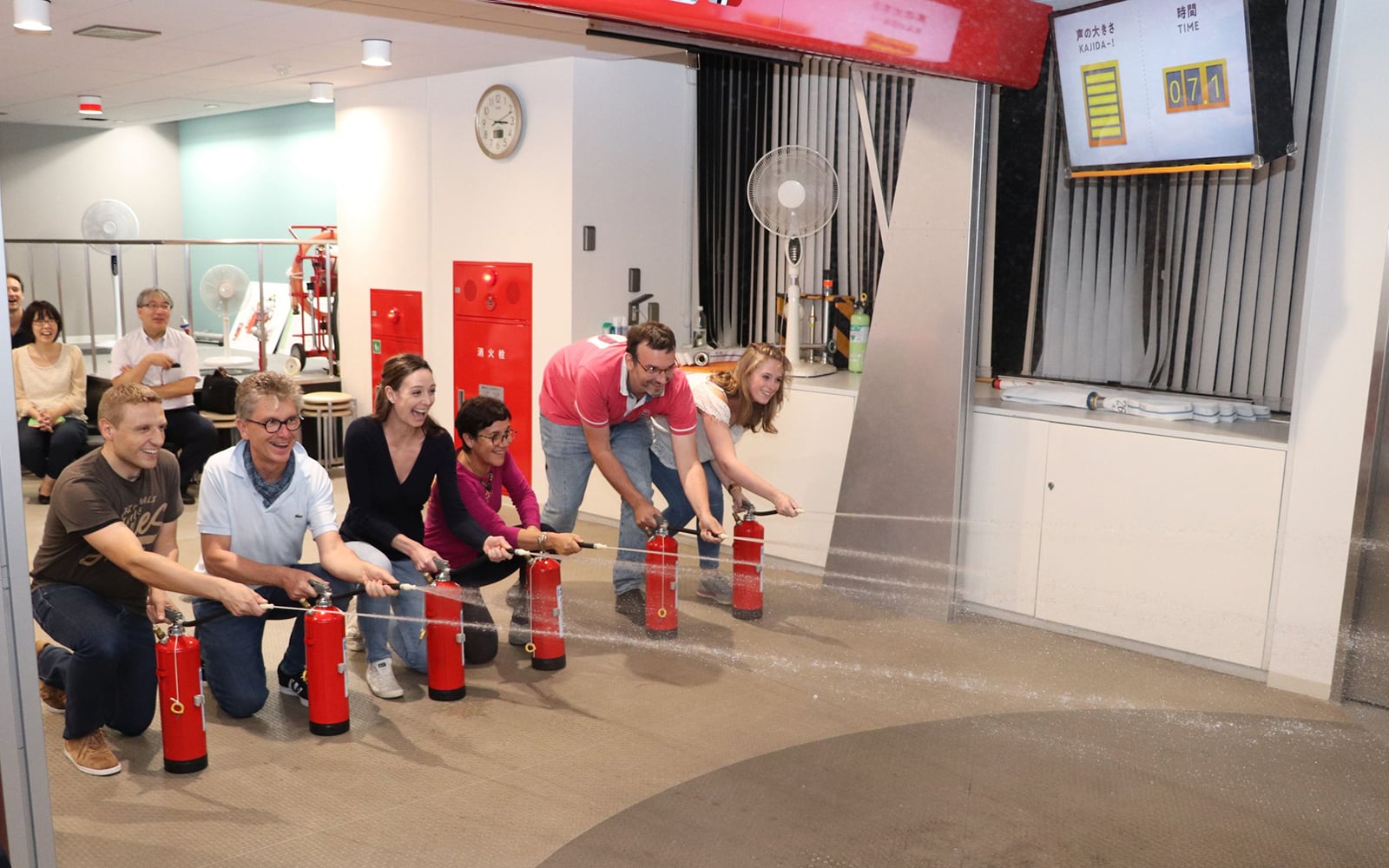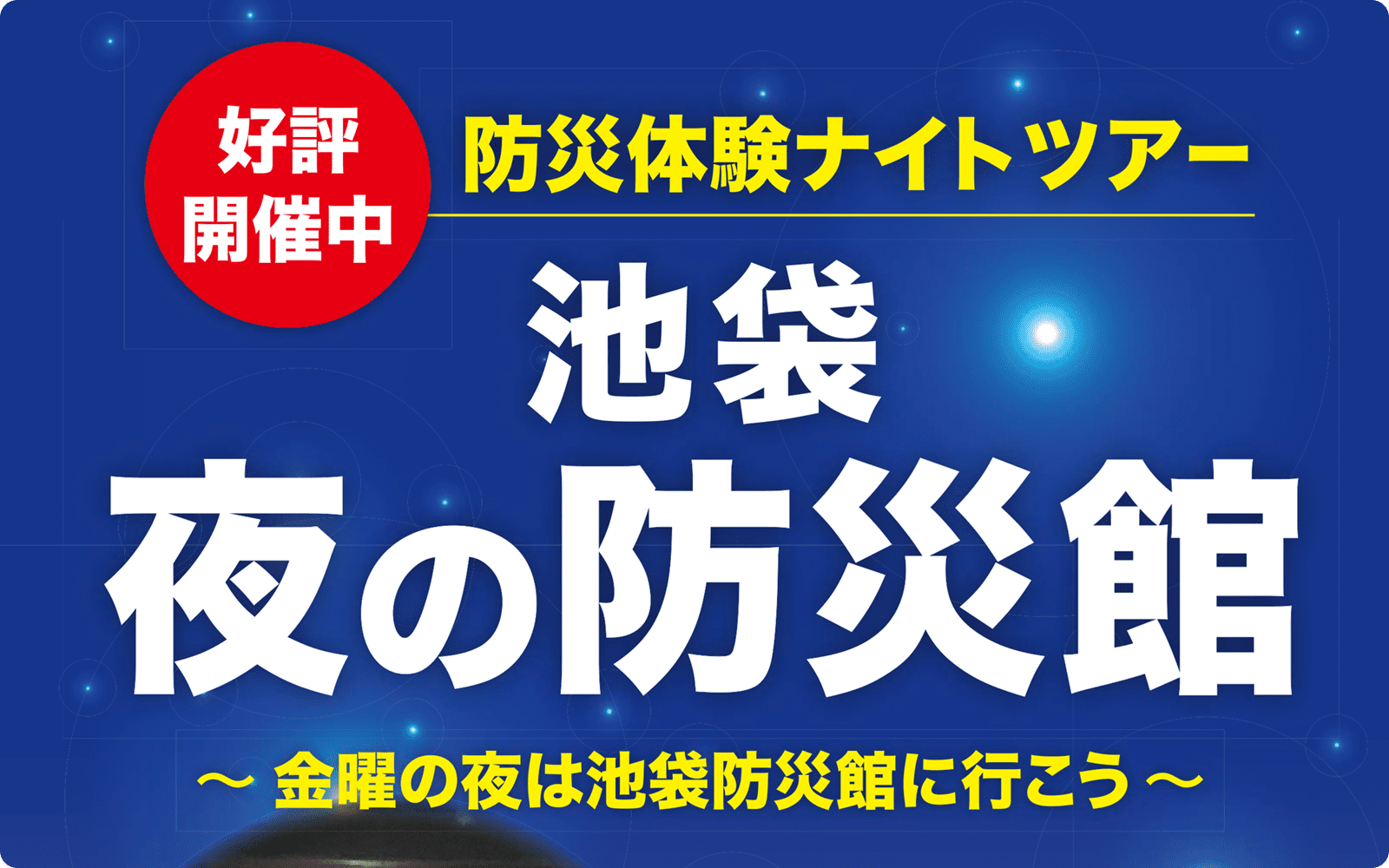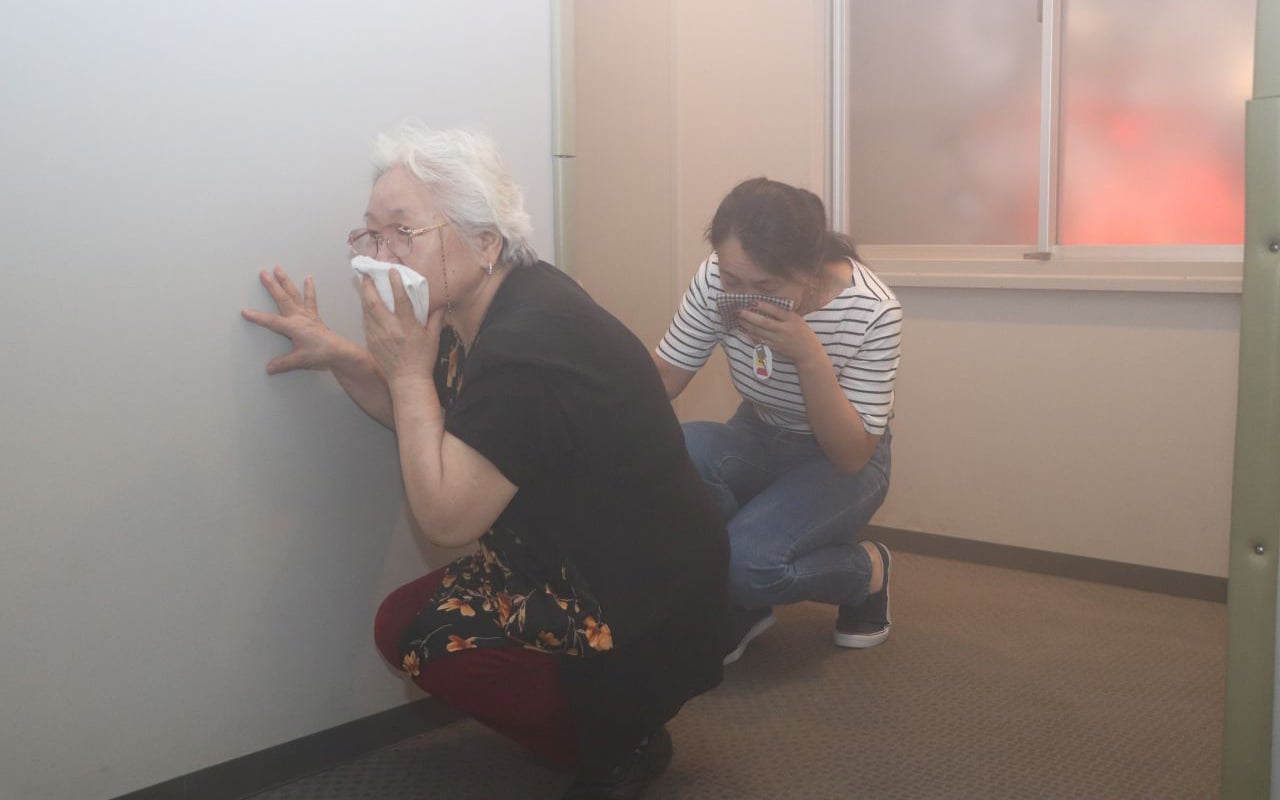Ikebukuro Life Safety Learning Center
Experience disaster prevention in an enjoyable way at Life Safety Learning Center just a five-minute walk from Ikebukuro Station!
As training for employees! Disaster prevention education for students! Emergency training for neighborhood associations and self-governing associations!
This facility can be used by a wide range of people.
The disaster prevention hands-on guided tour will be conducted in Japanese.
If you do not understand Japanese conversation to approximately the same level as a Japanese 10-year-old, then you will not be able to understand the advisories given by the instructor which could result in injuries occurring during the experiences. As such, we ask that you please bring an interpreter with you.
Additionally, if interpretation is necessary, there are aspects of the VR and First Aid Corners and the Map Exercise Section that you may not be able to understand. In principle, we ask that you select the Disaster Education Audio-Visual Corner for your fourth experience.
Please note that if you do not have an interpreter when applying for a reservation, we reserve the right to refuse reservations from people who do not understand Japanese to the requisite level.
It can take several days to process reservation applications made through the online system.
Please check if your reservation application has been confirmed or rejected by visiting your "My Page".
In the event that your reservation application has been rejected, the reason will be also be available on your "My Page", so please check this as well.
Additionally, when visiting the center, please thoroughly read these advisories in advance.
Facility guide
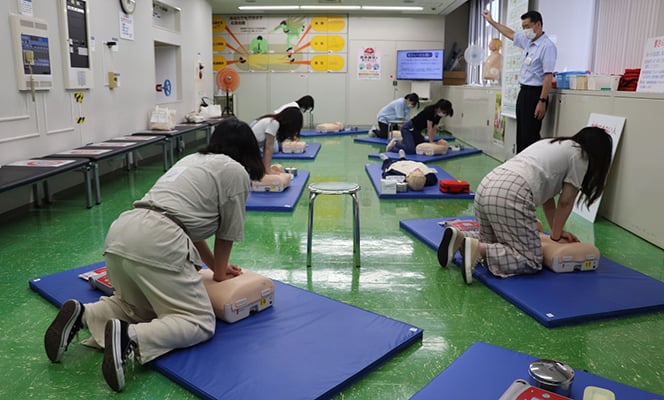
First Aid Section
Gain experience in cardiopulmonary resuscitation and using an AED. Learn how to perform proper first aid treatment.
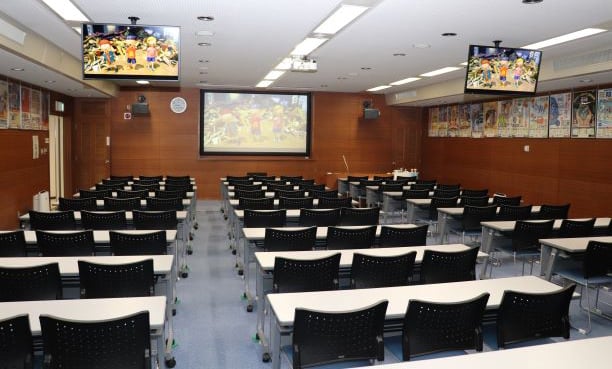
Disaster Education Theater
Disaster prevention films and disaster prevention cartoons are shown.

VR Disaster Section
The VR (virtual reality) system produces simulated disasters – earthquakes, fires and typhoons. Come and enrich your experience!
* The Ikebukuro Center has only the head-mounted display (with no motion sheet provided).
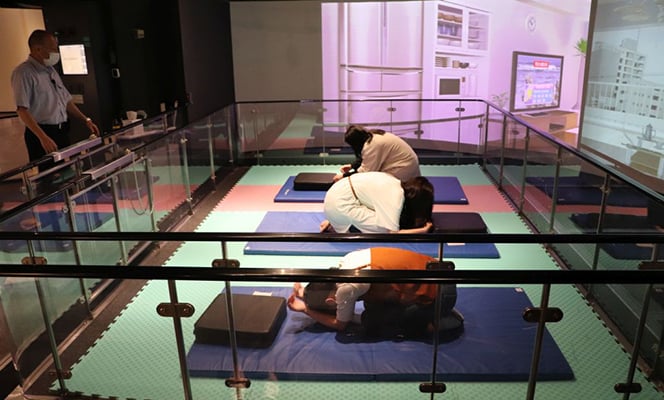
Earthquake Section
The facility was reopened on March 11, 2012. In addition to the new Great East Japan Earthquake and long-period ground motion experiences, you can experience simulations of five types of earthquakes. You can also learn about what actions you need to take in the event of an earthquake. Furthermore, the facility features exhibitions of measures to prevent the overturning, falling and movement of furniture.
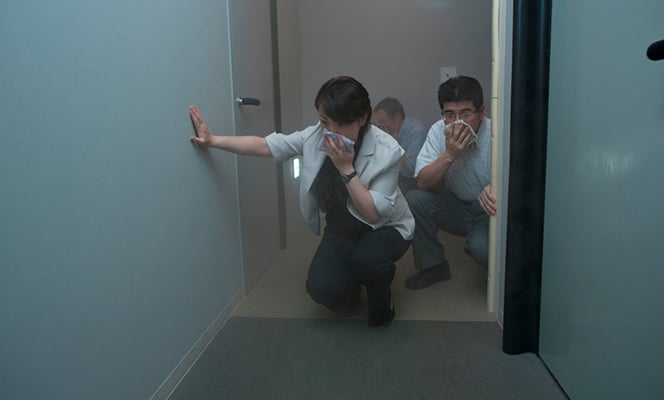
Smoke Room
Learn about the properties of smoke and experience an evacuation that involves searching for exits in smoky conditions.
What should you do if you are inside a building surrounded by smoke? Participate in a simulation.
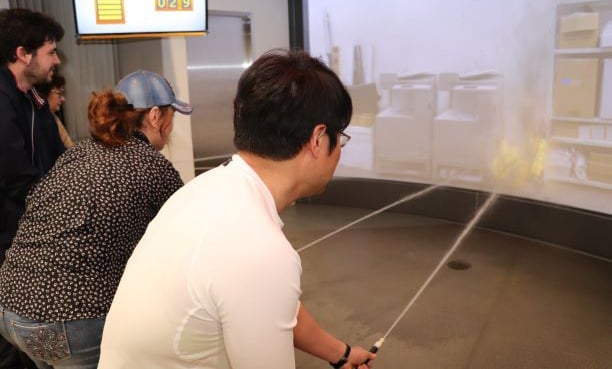
Fire Fighting Section
Try a firefighting simulation experience with realistic flames projected on a large screen. In addition to using a fire extinguisher, try discharging water using an indoor fire hydrant, standpipe and Class D pump—equipment that you normally wouldn’t have the opportunity to use.
(The water used for training is recirculated for water conservation purposes.)
Optional experience
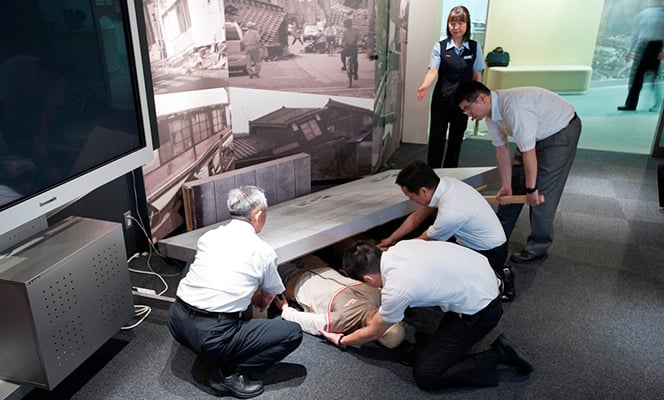
Rescue and Escape Section
During the Great Hanshin Earthquake, around 80% of people who became trapped under buildings and furniture were saved by their neighbors.
Learn through a simulated experience how to actually aid and rescue people from fallen block fences and acquire the skills needed for outdoor situations.
Minimum of six people required for this experience.
Note: Choose from a 25-minute program or a 50-minute program, depending on the number of participants.
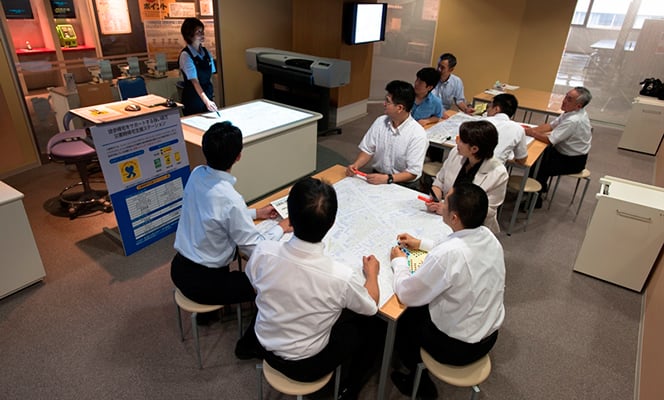
Protection Against Disasters Map Section
Write down information on roads, rivers, disaster prevention-related facilities and danger warnings on a map, create a disaster prevention map and confirm the local disaster prevention capabilities and risks. In addition to neighborhood associations and autonomous disaster prevention organizations, training using maps of schools and business establishments is also possible (the maps that can be prepared at the facility are limited to the Tokyo area).
Minimum of 10 people required for this experience.
Note: You can take the disaster prevention maps that you create home with you.
4F
Daily life accident prevention learning corner
Discover dangerous areas lurking in everyday life. Such hazards are projected onto a large screen to help with accident prevention.
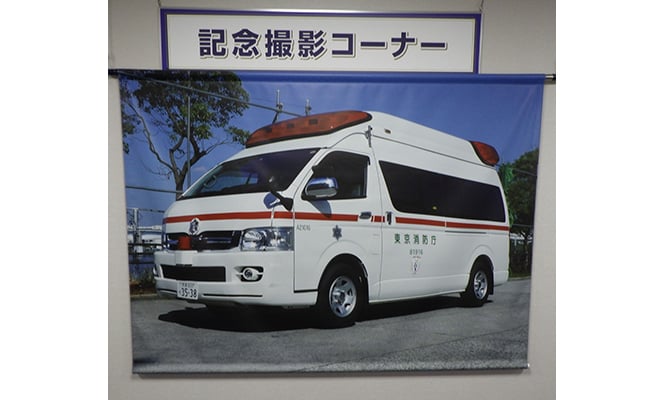
Commemorative photo corner
Take commemorative photos in front of an ambulance, pumper truck or ladder car tapestry.
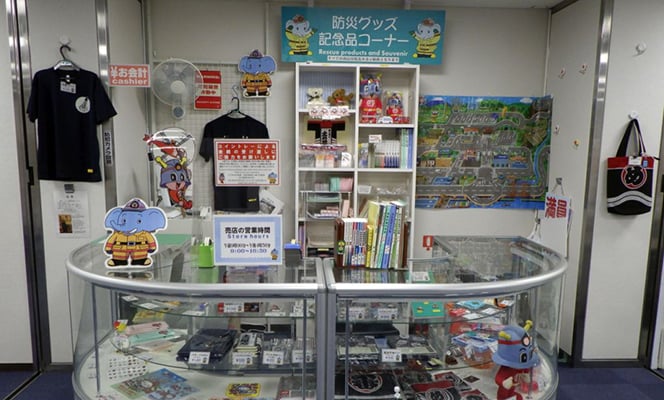
Disaster prevention goods shop
We offer items ranging from souvenirs of your visit to the Life Safety Learning Center to emergency supplies. Feel free to stop by before you leave.
5F
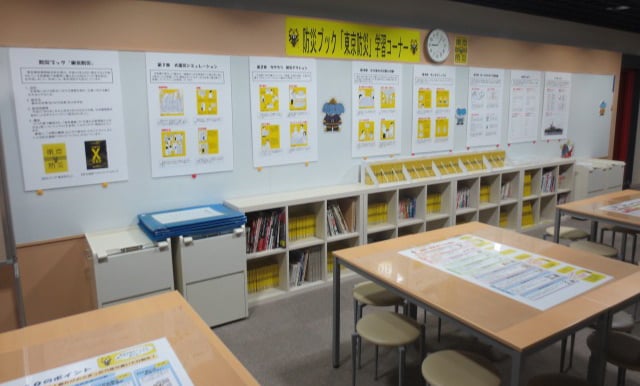
"Tokyo Disaster Prevention" book learning corner
In addition to being able to freely browse the disaster prevention book, we also offer a “disaster prevention map” (109 types throughout Tokyo) that is included with the disaster prevention book.
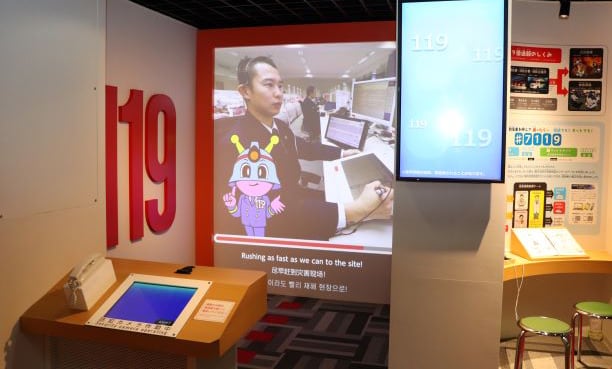
119 call corner
Learn about the series of actions to take, from calling 119 to the arrival of the fire brigade, when encountering a fire or emergency.
Use guide
Please note that due to the impact of the Novel Coronavirus epidemic, the following information may be somewhat changed.
For information on how to make a reservation, please see the Japanese User's Guide.
Each tour is guided by an instructor.
Please see the Facility Guide for the experience sections.
1. Basic Course (1 hour & 40 minutes)
(1) Experience Items
①I perform four disaster prevention experiences that I matched a required experience and a choice experience of ② with of this
①Essential Experience Items (3 experience) 25 minutes each
Earthquake, Smoke, Firefighting
②An Elective Experience Items (one selects from 3 next experiences) 25 minutes
- Audiovisual Classroom (disaster prevention video or animation)
- VR experience
- First Aid Training
(2) Capacity
- Up to three groups (15 people per group) and a total of 45 people in each time slot
* Please note that depending on the number of participants, you may be grouped with other people for the experience. - For non-speakers of Japanese, the maximum number of people per group is 15.
Please have an interpreter accompany the group.
(3) Time
- 9:20~11:00
- 13:00~14:40
- 15:00~16:40
Please contact us in advance if you have special requests, such as wishing to experience only three sections due to a tight schedule.
Please note that we may not be able to meet your request depending on the reservations on the day or for other reasons.
2. Short Course (50 minutes) * Only once a day / Currently suspended
(1) Experience Items
① Earthquake ② Audiovisual Classroom (disaster prevention video or animation)
(2) Capacity
- Up to two groups (30 people per group) and a total of 60 people in each time slot
* Please note that depending on the number of participants, you may be grouped with other people for the experience. - For non-speakers of Japanese, the maximum number of people per group is 20.
Please have an interpreter accompany the group.
(3) Time
11:00~11:50
3. Night Tour (1 hour & 40 minutes) * Twice a day every Friday (Given only at 5 pm after August)
(1) Experience Items
① Earthquake ② Smoke ③ Firefighting ④ Audiovisual Classroom (disaster prevention video or animation)
* You can experience "nighttime disasters."
(2) Capacity
- Up to 15 people
* Please note that depending on the number of participants, you may be grouped with other people for the experience. - For non-speakers of Japanese, the maximum number of people per group is 15.
Please have an interpreter accompany the group.
(3) Time
- 17:00~18:40
- 19:00~20:40 Currently suspended
- The instructor guidance is only in Japanese.
- Elementary school students and the younger need to be accompanied by adult(s) except at the non-guided tour sections.
- Reservations for the Disaster Prevention Experience can be made up to 5 months in advance.
Example:
Reservations for use on October 15 are accepted from May 15.
Reservations for use on July 30 are accepted from March 1. (On February 28, reservations up to July 28 can be made.) - Admission to the experience sections ends at 4:15 pm.
- Admission to the Night Tour ends at 6:15 pm.
We have the visitor age limits for greater safety.
| Experience Item | Restriction |
|---|---|
| Earthquake Section | 3 years old and over |
| Firefighting Section | 3rd grade of elementary school or above |
| First Aid Section | 4th grade of elementary school or above |
| VR Section | 2nd grade of elementary school or above |
* There is no age limit for the Audiovisual and Smoke Room
(VR experience may cause motion sickness. Please make sure you are in the right condition for the adventure.)
- In the case of the change in the number of participants or cancellation, please contact us as soon as possible.
- Please refrain from bringing the pets other than guide dogs, hearing dogs and service dogs.
- There are some sections specially having the visitor age limits.
- We have no parking for cars, motorcycles and bicycles. (Drop-off/Pickup is possible.)
- Please wear easy-to-move clothes with no sandals or high-heeled shoes.
- Smoking is prohibited overall.
- Drunken visitors are not admitted.
- As a general rule, eating and drinking are not allowed in the building. However, drinking for hydration is possible at designated places. Also, please take your trash with you.
Transport access
Access Map
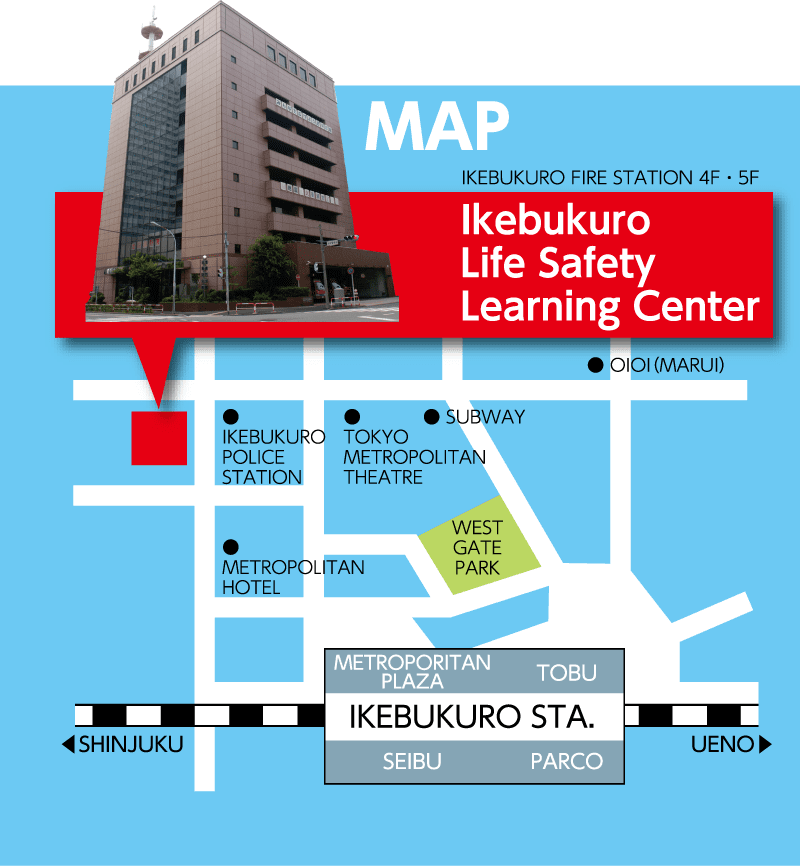
- Address
- 2-37-8 Nishi-ikebukuro, Toshima-ku, Tokyo 171-0021
- Access
- 5-minute walk from Ikebukuro Station (South Exit, West Exit, Metropolitan Exit)
- Open hours
- Open from 9:00am to 5:00pm (open until 9:00pm on Fridays)
Last admission for experiential corners is 4:15pm (8:15pm on Fridays)
- Days closed
- The first and third Tuesdays and the day after the third Tuesday of each month (or the following day if this falls on a national holiday)
New Year's holidays (December 29 – January 3)
- Admission
- free
- Parking
- None (including bicycles)
